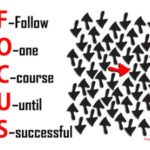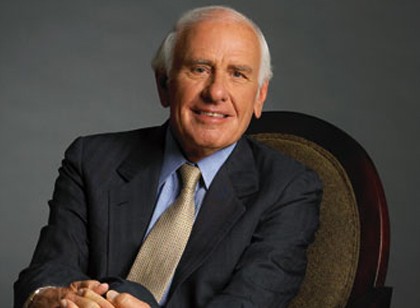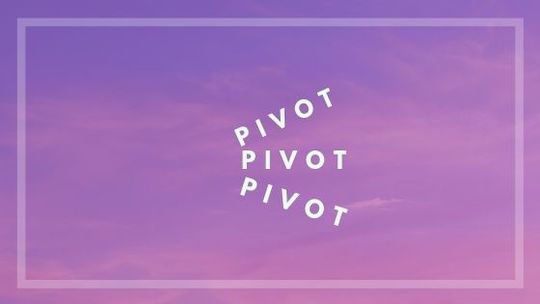FRIDAY REVIEW: STRATEGY
What are your strategies for success? Here are a few strategy-related posts you may have missed.


“It is high time to step out of your own shadow.”


What are your strategies for success? Here are a few strategy-related posts you may have missed.


“It is high time to step out of your own shadow.”


Image from Unsplash by Vladislav Babienko
To what degree are you a one-dimensional or multi-dimensional person?
Take a close look at how you spend your days and who you spend them with.
In which of these communities are you experiencing the greatest engagement and growth?
Alternatively, where do you feel stuck, stopped, or even regressing?
Over the past several months, some of my clients and many people in my professional networks have seen their growth thwarted. Many of us have had our cheese moved by the pandemic and its economic consequences. Many are exploring other options, or are engaged in what I like to call a dual strategy – pursuing alternative and supplemental career options.
Beyond the working world, many of them are also taking the time to invest in personal and professional growth efforts, to better themselves and others.
Consider purchasing Seth Godin’s book, The Bootstrapper’s Bible, to see how you might pursue the idea of starting and growing your own business. The book was originally written in 1998 and while a bit dated, contains many of the fundamentals to get you going.

Image from Unsplash by Robert Anasch
Did you know that spiderwebs don’t just intercept prey but actually attract it?
Many people—including me—have believed that spiders simply set up their traps in a promising area that insects travel and wait to see what happens.
It turns out that many spiders build webs using designs that actively attract other insects. They don’t just trap the unlucky.
How often and in what ways are you lured and trapped by the seductive aspects of the worldwide web?
In what negative ways does it consume pieces of your life without you knowing?
What are some good strategies for avoiding and breaking free from the addictive, alluring man-made web?

Image from Unsplash by Tim Mossholder
During my senior year of high school I worked as a Deli-man at the local Jewish delicatessen. My responsibilities included serving a high volume of customers delicacies such as pastrami, corned beef, and smoked fish for Sunday brunch, from 3pm Saturday to 3am Sunday.
I was 18 years old. The majority of the other deli-men were in their fifties or sixties. It turned out that being able to slice lox razor-thin was paramount to being a brain surgeon in this community, and these veterans were simply the best.
One downside of this work was the significant number of challenging customers who saw themselves as superior to everyone else, and demanded “only the best.”
When those customers entered the store, most of the veteran deli staff quickly took their 30-minute breaks, leaving ME to the wolves, and most of these customers strongly objected to an 18-year-old rookie taking care of them.
Clearly, fighting fire with fire was never going to work, so I took the kill them with kindness approach, and in time, won them over.
Where and with whom in your personal or professional communities would being the nice person you are be the best strategy to follow?

Image from Unsplash by Annika Treial
A fair percentage of the coaching engagements I’ve been involved in over the years have related to career transitions. Two common terms for such assignments are on-boarding and assimilation coaching.
One of the more challenging and often stressful assignments is when a new leader or team is brought in to “turn around” an organization. In such situations the company/horse and the vast number of employees/riders are headed in different directions.
These assignments almost always involve casting a more inspiring vision and enrolling others in changing direction toward a better future.
Assuming you are proactively taking steps to lead and manage your own career trajectory, what strategies and tactics can and will you take to lasso those horses and get in the saddle of those headed in a direction you would like to travel?
What are your strategies for success? Here are three strategy-related posts you may have missed.

Follow One Course Until Successful (FOCUS)


“Temporary setbacks boost your skill to open locks with previously unknown combinations.”

Image from jimrohn.com
Jim Rohn, who passed away in 2009, was a personal development pioneer.
His over 6,000 seminars, countless books, tapes, learning programs and, of course inspirational quotes, have influenced millions.
Many of his wisest lessons were focused on our abilities to work on ourselves and contribute to others in our various communities.
One of his many students was a young, broke, down-and-out Tony Robbins, who has said many times that Rohn was the man who turned his life around. Tony, as we all know, has been working on himself for decades, and has paid forward similar lessons to millions.
What are the strategies, habits, and behaviors that help you continue your personal best journey?
What additional approaches can you incorporate in your days to both contribute to others and attract the success you desire?

Image created in Canva
As part of my customized Personal Excellence Training — which sets the stage for the majority of coaching engagements — I introduce a self-coaching tool called “The Pivot Point.”
This technique uses the concept of “creative tension” described by Robert Fritz in his book, The Path of Least Resistance.
Essentially, the pivot point involves asking yourself — or perhaps a group — these three questions:
The leverage of our vision provides the impetus to move forward, and creates the opportunity to better our situation.
Select at least one personal or professional front-burner issue or project to try out the Pivot Point technique. Please consider replying to this post to let me know how things go.

Image from Unsplash by Travelergeek
When was the last time you needed to repair your car, an appliance, or some other device in your home?
In days gone by, we would sometimes give these items a good whack in hopes of getting them going again.
Sometimes it actually worked!
These days, it is rare that any single tool or technique can get the job done, given the multitude and complexity of the many technologies and challenges we face.
In our use of communication, leadership, management, and coaching tools, it almost always takes a tailored and customized approach to optimize our outcomes.
Where in your life is being a hammer not working?
Consider asking a friend, colleague, family member, or coach for guidance regarding what other tools might be a better choice.

Image from Unsplash by Chuttersnap
Did you know that the self-storage industry generates revenue of 38 billion dollars annually and that almost 10 percent of households use them? Many also have basements and garages full of stored items.
The volume of self-storage units in the United States alone could fill the Hoover Dam with old clothes, skis, and keepsakes more than 26 times.
Beyond the costs, consider the maintenance and generalized stress caused by the clutter and junk most of us would never pay for again if given the chance.
What are some strategies to lighten your load to live a simpler and perhaps more minimalist lifestyle? At the same time, what are a few life experiences you wish to collect that may only take up space on your camera or computer hard drive? What actions will you take today to make progress in both areas?